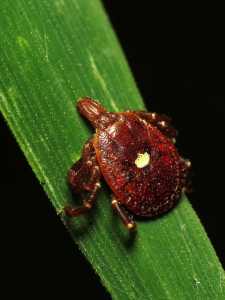MedicalResearch.com Interview with:
Tammi L. Johnson PhD, Microbiologist
Division of Vector-Borne Diseases
CDC
MedicalResearch.com: What is the background for this study?
Response: Lyme disease is caused by the bacterium
Borrelia burgdorferi and is transmitted to humans through the bite of infected blacklegged ticks, also called deer ticks. Lyme disease is the most commonly reported vectorborne illness in the United States, with approximately 300,000 humans becoming infected each year.
While Lyme disease infections are highly concentrated in the northeast and upper Midwest, the number of counties in which the blacklegged tick has become “established” has more than doubled in the past two decades. Established populations of these ticks are found in 35 states.
Knowing that Lyme disease is increasing both in numbers of infections and in geographic range in the United States, we did this study to determine if people are at risk of encountering infected ticks while recreating in eastern national parks. This is the first large-scale survey in multiple national parks, and though suspected, it had not been confirmed that ticks in many of these parks were infected.
So the purpose of the study was to survey national park units across six Northeastern and Mid-Atlantic States and the District of Columbia, ranging from Maine in the north to Virginia in the south and characterize the risk of human exposure to ticks-borne bacteria.
Researchers from the Centers for Disease Control and Prevention and the National Park Service evaluated frequently used trails in Acadia National Park, Catoctin Mountain Park, Fire Island National Seashore, Gettysburg National Military Park,
Manassas National Battlefield Park, Monocacy National Battlefield, Prince William Forest Park, Rock Creek Park, and Shenandoah National Park.
(more…)





